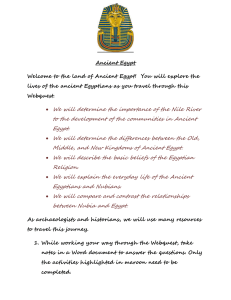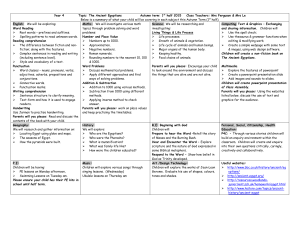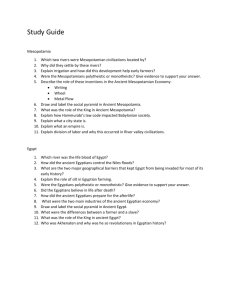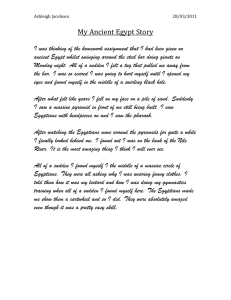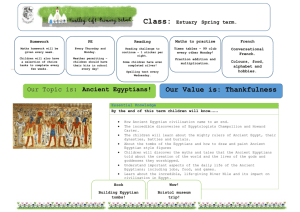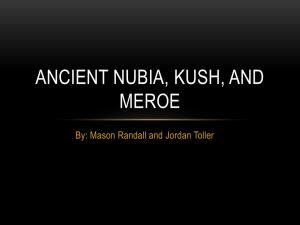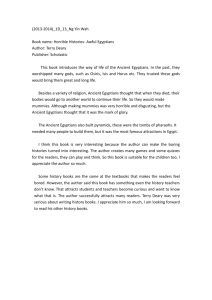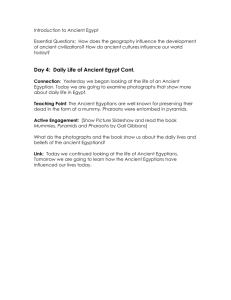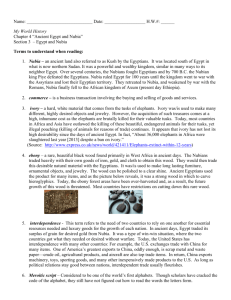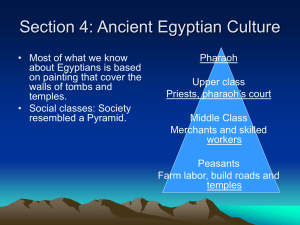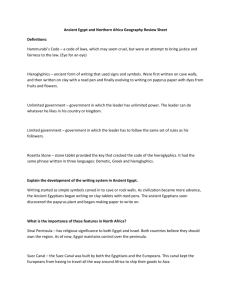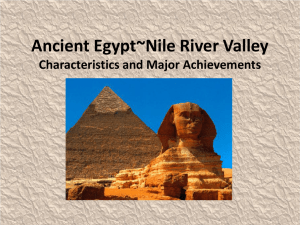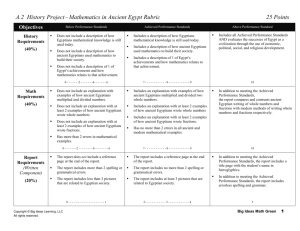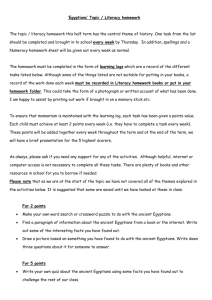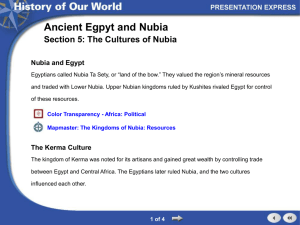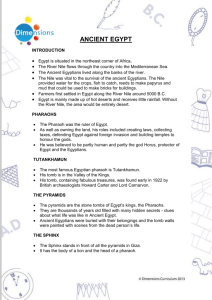Section 1
advertisement
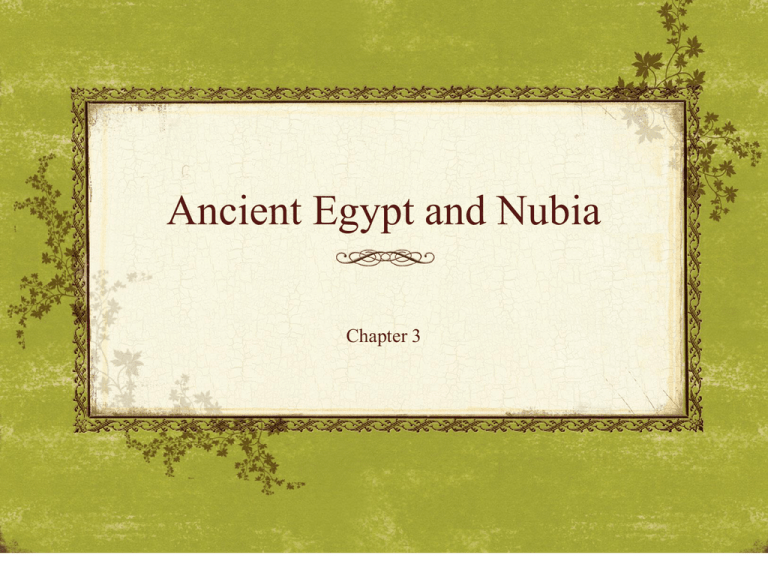
Ancient Egypt and Nubia Chapter 3 Section 1 Section 1 • The Nile River brought the ancient Egyptians and Nubians a constant source of water, allowing them to fish, farm, trade, and build communities along its banks. •Because of the river’s cataracts, the Nubians had to travel over land. They traded ebony wood, ivory, ostrich feathers and eggs, panther skins, and throwsticks. Section 2 Section 2 • The Egyptians believed their kings had the power to provide floods and the harvests that followed. •Accomplishments of three Egyptian kingdoms •Old Kingdom – peace and trade with Nubia. •Middle Kingdom – irrigation and public works. •New Kingdom – huge, powerful armies. Section 3 Section 3 • Ancient Egyptians believed in several groups of gods, all of whom had control over major aspects of life. They also believed in live after death. •They believed that the gods controlled nature. Section 4 Section 4 • Hieroglyphs were picture-like symbols that represented sounds or ideas. •Egyptians used hieroglyphs as their system of writing. •Writing enabled the people to keep track of their economy through written records and, later, enabled them to communicate more complicated ideas. Section 5 Section 5 • Egypt and Nubia •At first, they were friendly and traded goods. In time, they became competitive, struggling over power and control of the land. • Napata and Meroe •Napata conquered Egypt at a weak point in its history. •Napatan rule restored and preserved many old Egyptian ways. •Egypt traded with both Meroe and Napata. Essay Questions 1. How did the physical geography of ancient Egypt shape the development of its civilization? 2. How did religion affect the lives of the ancient Egyptians? 3. Why was the Egyptian Empire able to be controlled at times by rulers of Nubia? 4. Why was the Nile River so important to the lives of the ancient Egyptians?
